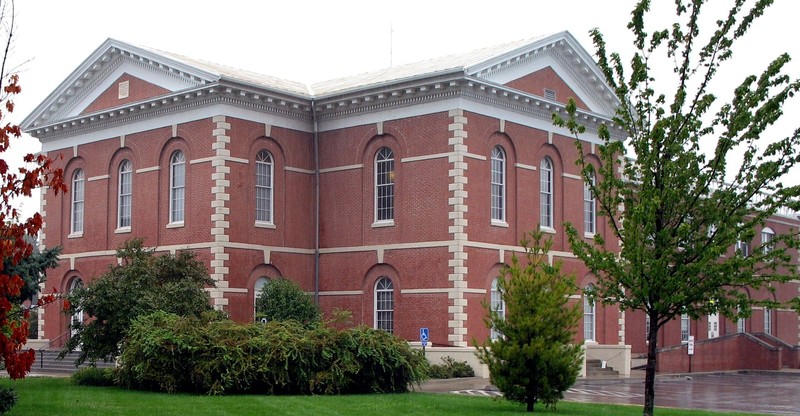Platte County Courthouse
Introduction
Text-to-speech Audio
The Platte County Courthouse, built in 1866, replaced a small wooden structure (built in 1841) that burnt down during the Civil War. Another military-led burning of Platte City thwarted the town's attempt to rebuild the courthouse in 1864. The courthouse speaks to Platte City's rebirth after the war, which, in addition to the two major fires, included economic decline, strife between Union and Southern sympathizers, guerilla warfare, and more. The courthouse grew into a symbol of civic pride, but it also served a practical purpose, including ties to the Bonnie and Clyde gang and, possibly, Jesse James.
Images
Platte County Courthouse

Backstory and Context
Text-to-speech Audio
In 1836, the Platte Purchase allowed Missouri to add more than 3,000 square miles on its northwest side, which included Platte County; the U.S. pressured local Native Americans to sell the land. Even before the Platte Purchase took place, Missouri residents infiltrated the region (now comprised of six counties in northwest Missouri) and its fertile farming land in anticipation of the eventual expansion of the state. After the treaty, residents and immigrants moved to the area in droves.
The first county court took place in a log cabin on March 11, 1839, in what is now Platte City. For years, before construction of a permanent courthouse began, county and circuit courts met in various cabins or stores. The county built and opened its first courthouse, a fifty-square-foot, two-story wooden building, in 1840. In 1861, during the Civil War, Union troops set fire to the Southern-sympathizing town (home to an abundance of guerrilla warfare), which destroyed the courthouse. In 1865, the county appointed Joseph Murphy commissioner of public buildings and appropriated $100,000 for a new courthouse. The builders laid the now-historic courthouse cornerstone in 1866 and finished the structure in 1867.
The courthouse hosted several intriguing events and cases. In the civil lawsuit Winn vs. Reed in 1897, concerning eleven heads of hogs, the court awarded Newton Winn $75.00 in damages. An outraged Watson Reed shot and killed Winn, likely marking Missouri's only "in-court" slaying; the court sentenced Reed to ninety-nine years at hard labor. Also, records include a nineteenth-century marriage certificate from Jesse M. James, which could be that of the notorious outlaw. Meanwhile, Blanche Caldwell Barrow, sister-in-law of Clyde Barrow and a Bonnie and Clyde Gang member, was tried for theft in the Platte County Courthouse in 1933 and received ten years in the State Penitentiary.
Sources
Cameron, Janice R. "Nomination Form: Platte County Courthouse." National Register of Historic Places. mostateparks.org. 1978. https://mostateparks.com/sites/mostateparks/files/Platte%20Co.%20Courthouse.pdf.
History of Clay and Platte Counties, Missouri. St. Louis National Historical Society. archive.org. 1885. https://ia601606.us.archive.org/23/items/historyofclaypla00nati/historyofclaypla00nati_bw.pdf.
Platte County. "About Platte County: Platte County History." Platte County government website. platte.mo.us. Accessed May 4, 2023. https://www.co.platte.mo.us/about-platte-county.
"Platte County's Early History." Platte County Missouri Historical Society. Accessed May 5, 2023. https://pchs1882.org/history-and-photos, or directly at https://img1.wsimg.com/blobby/go/d74c32f0-b0b7-4416-b781-e4acf22391b4/downloads/Platte%20County%20Early%20History.pdf?ver=1683151356230.
CC BY-SA 2.5, https://commons.wikimedia.org/w/index.php?curid=1112950
